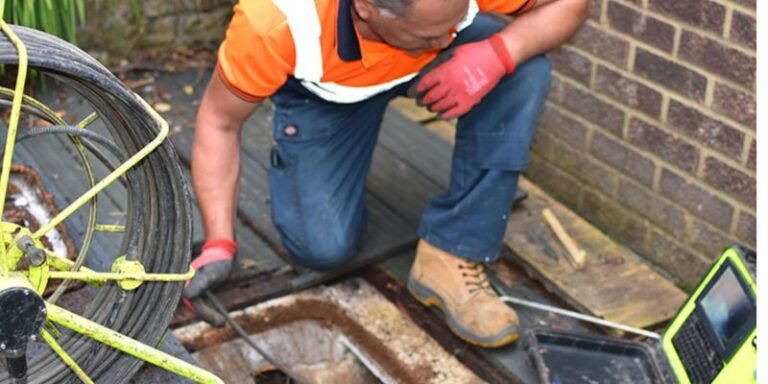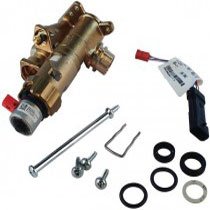Understanding Natural Gas Line Regulators: A Comprehensive Overview
To ensure safe and efficient delivery of natural gas, regulators play a crucial role. This article will explore what natural gas line regulators are, how they function, their types, installation, maintenance, safety considerations, and their importance in the overall natural gas distribution system.
What is a Natural Gas Line Regulator?
A natural gas line regulator is a mechanical device that controls the pressure of natural gas as it travels from the supply source to end users. It reduces the high pressure of gas in the supply line to a safe and usable level for household appliances and industrial equipment. Without a regulator, gas would enter a home or facility at high pressure, posing safety hazards and potentially damaging appliances.
How Regulators Work
Natural gas line regulators function on the principle of pressure regulation. Here’s a simplified overview of their operation:
- Pressure Reduction: The regulator takes in high-pressure gas from the supply line and reduces it to a preset lower pressure that is suitable for use in appliances.
- Diaphragm Mechanism: Inside the regulator, a diaphragm moves in response to the gas pressure. When the pressure exceeds the desired level, the diaphragm pushes against a spring, opening a valve that allows some gas to escape, thereby reducing the pressure.
- Feedback Loop: As the pressure drops to the desired level, the diaphragm returns to its original position, closing the valve and stabilizing the pressure in the line.
This continuous feedback mechanism ensures that gas is supplied at a consistent pressure, accommodating fluctuations in demand without compromising safety or performance.
Types of Natural Gas Regulators
Natural gas regulators can be classified into several categories based on their application and design:
- Residential Regulators: Typically installed at the service entrance of a home, these regulators reduce high-pressure gas from the main supply line to a lower pressure suitable for household appliances.
- Commercial Regulators: Used in businesses and larger facilities, these regulators handle greater gas volumes and may include additional features for monitoring and control.
- Industrial Regulators: Designed for heavy-duty applications, industrial regulators can manage higher pressures and flow rates, catering to manufacturing processes and large-scale heating systems.
- High-Pressure Regulators: These regulators are used where gas needs to be maintained at high pressures for specific applications, such as in gas processing facilities.
- Low-Pressure Regulators: Ideal for household and light commercial use, these regulators provide a stable low-pressure gas supply.
- Two-Stage Regulators: These regulators use two separate stages to provide better control over gas pressure, minimizing fluctuations and enhancing performance.
Installation of Natural Gas Regulators
Installing a natural gas regulator is a task that should always be performed by qualified professionals. Here’s a general overview of the installation process:
Step 1: Site Assessment
Before installation, a thorough assessment of the installation site is necessary. This includes checking the existing gas supply line, evaluating the demand for gas, and ensuring compliance with local regulations and safety codes.
Step 2: Choosing the Right Regulator
Selecting the appropriate regulator is crucial. Factors such as gas pressure requirements, flow rates, and the type of appliances being used will influence the choice.
Step 3: Preparing the Installation Area
The area should be clean and accessible, allowing for easy installation and future maintenance. Proper ventilation is also important to avoid gas buildup.
Step 4: Connecting the Regulator
The regulator must be connected to the gas supply line. This involves securing it with appropriate fittings, ensuring that the inlet and outlet connections are correctly oriented to maintain the proper gas flow direction.
Step 5: Testing
Once installed, the system should be thoroughly tested for leaks. A pressure test will confirm that the regulator is functioning correctly and that there are no leaks in the connections.
Step 6: Final Checks
After testing, ensure that the regulator is securely mounted and that all connections are tight. Provide documentation and instructions for the user regarding the operation and maintenance of the regulator.
Maintenance of Natural Gas Regulators
Regular maintenance is essential to ensure that natural gas regulators operate efficiently and safely. Here are some maintenance tips:
- Regular Inspections: Conduct routine inspections to check for signs of wear, corrosion, or damage. Look for leaks or any irregularities in operation.
- Cleaning: Keep the regulator and surrounding area clean to prevent dust and debris from affecting its performance.
- Calibration: Over time, the settings on a regulator can drift. Regular calibration checks ensure that it maintains the correct pressure settings.
- Professional Servicing: Schedule periodic servicing by a qualified technician to conduct a thorough inspection and make any necessary adjustments.
Safety Considerations
Safety is paramount when dealing with natural gas and regulators. Here are essential safety considerations:
- Leak Detection: Natural gas is odorless, but an additive (usually mercaptan) gives it a distinctive odor. Regularly check for gas leaks, especially after installation or maintenance.
- Ventilation: Ensure proper ventilation in areas where regulators are installed to prevent gas accumulation in case of a leak.
- Emergency Procedures: Have a plan in place for gas emergencies, including knowledge of how to shut off the gas supply and whom to contact in case of a leak.
- Compliance with Codes: Always adhere to local codes and regulations concerning gas installations and maintenance. This includes ensuring that all work is carried out by licensed professionals.
Importance of Natural Gas Regulators
Natural gas regulators play a vital role in the safe and efficient delivery of natural gas. Their importance can be summarized in several key points:
- Safety: By regulating gas pressure, these devices prevent dangerous situations that could arise from excessive pressure, such as explosions or appliance damage.
- Efficiency: Regulators ensure that gas is delivered at the right pressure, optimizing the performance of gas appliances and systems, leading to reduced energy costs.
- Reliability: With a well-functioning regulator, users can depend on a consistent gas supply, enhancing the reliability of heating and cooking systems.
- Environmental Impact: By promoting efficient gas use, regulators contribute to reducing greenhouse gas emissions and supporting sustainable energy practices.
Conclusion
Natural gas line regulators are essential components of the natural gas distribution system. They ensure that gas is delivered safely and efficiently to end users, playing a crucial role in homes, businesses, and industrial applications. Understanding how these regulators function, their types, installation and maintenance processes, and the associated safety considerations empowers consumers and professionals alike to make informed decisions regarding their gas supply systems.






